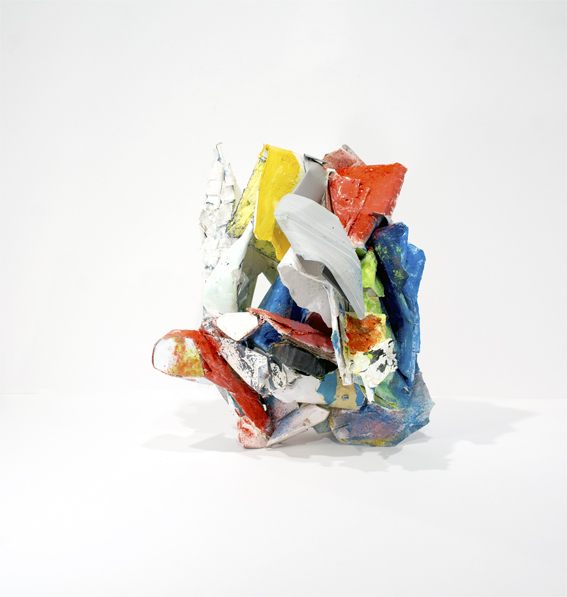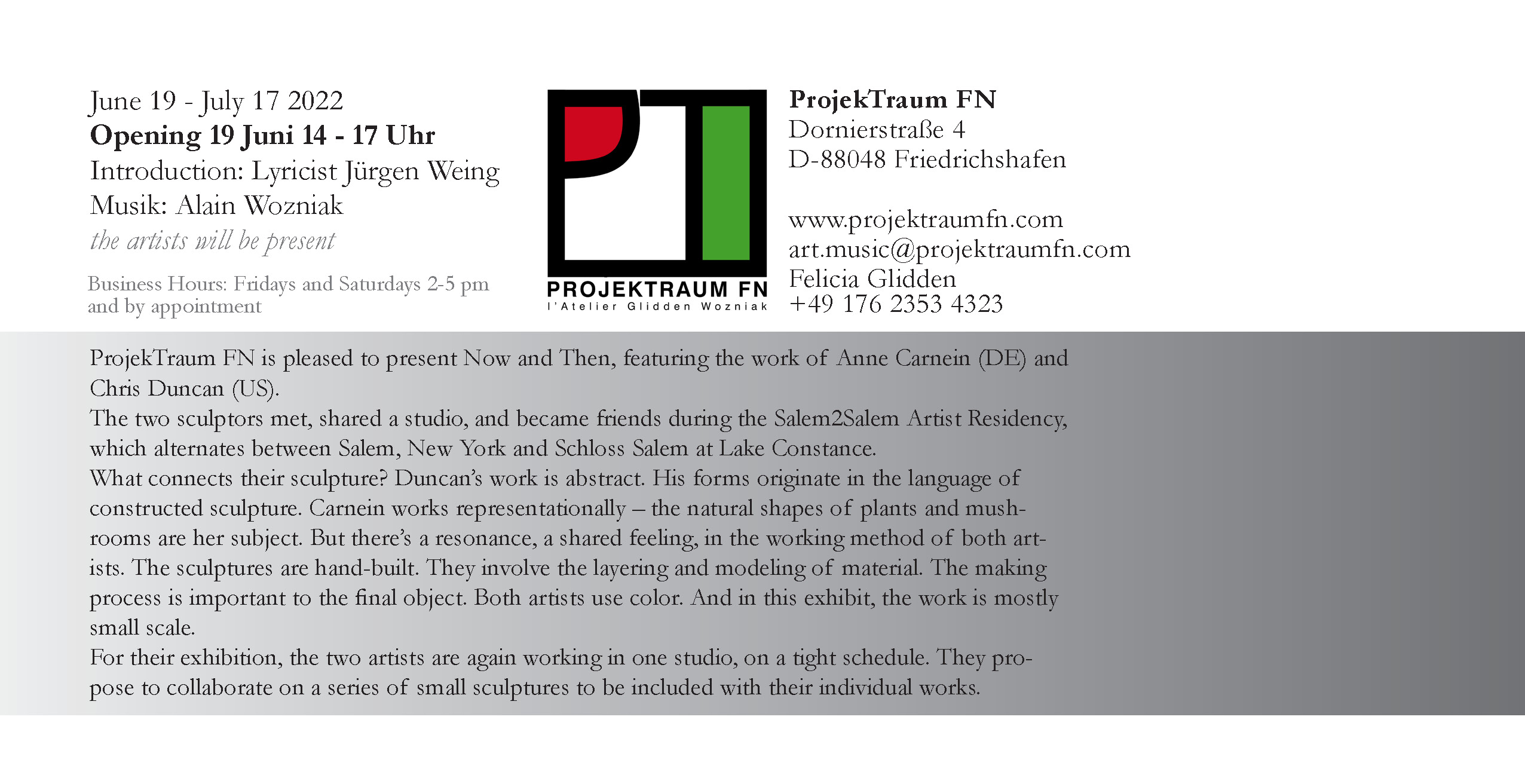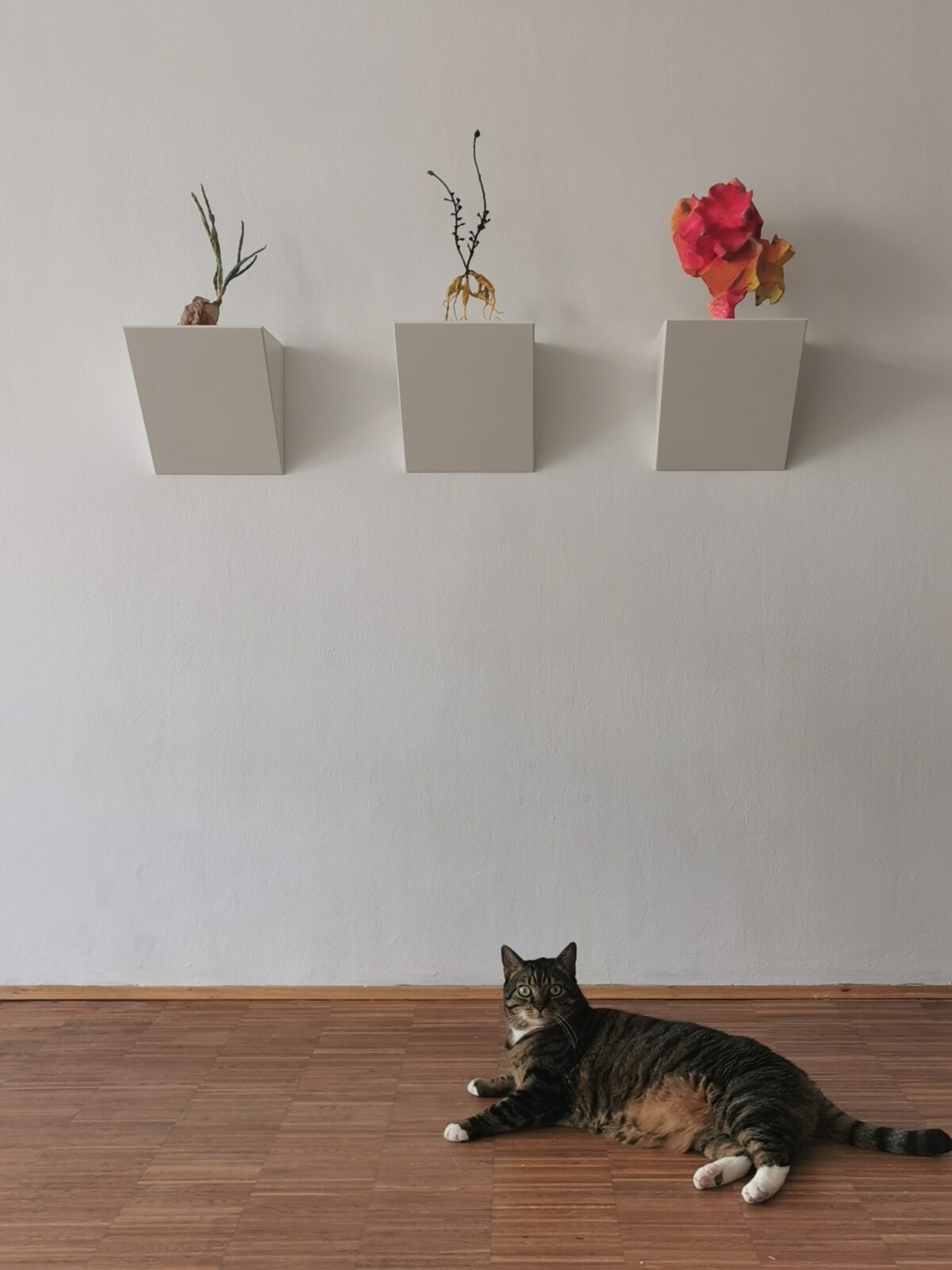


At first glance the works of Anne Carnein and Chris Duncan might appear to have little in common. Carnein’s sculpture is organic, literally rooted, often colored in umber shades. The materials – cloth and thread – seem natural, and intended to reflect nature. Like plants, the sculptures search out the light or push their way down into the earth.
Duncan’s work in paper, cardboard and resin is bright and artificially colored. The surfaces are shiny and industrial. The sculptures start from the floor and lurch or twist up. The forms originate in geometry and the language of constructed sculpture. What do they have to do with nature, and what do they have to do with Anne Carnein’s work?
Well…both artists have a studio-based practice. Both make objects that are hand built and mostly low-tech. Their sculptures are constructed, assembled from parts. They emphasize materiality. In Carnein’s sculptures, close inspection reveals a patchwork of fabric, color, and detailed stitching, creating surfaces and forms far more complex than they first appear. Duncan’s sculptures have torn and cut edges and visible hardware located casually throughout. Color is layered on, and surfaces switch from painted and epoxied to raw and exposed.
Both artists work and re-work materials and images looking for a structure that’s visually satisfying, layered, and open to different meanings. Both create sculptures that are intended to encompass and perhaps evoke feelings, sensations, memories. You could say that both artists value a kind of tension between the raw and the cooked. They each require an immediacy in their particular working process that allows for response to the way a work looks and feels; to qualities of gravity, balance, and surface that make sense visually, physically and emotionally. They value both rationality and passion, structure and gesture. And in the end they each want to be at least a little bit surprised.
